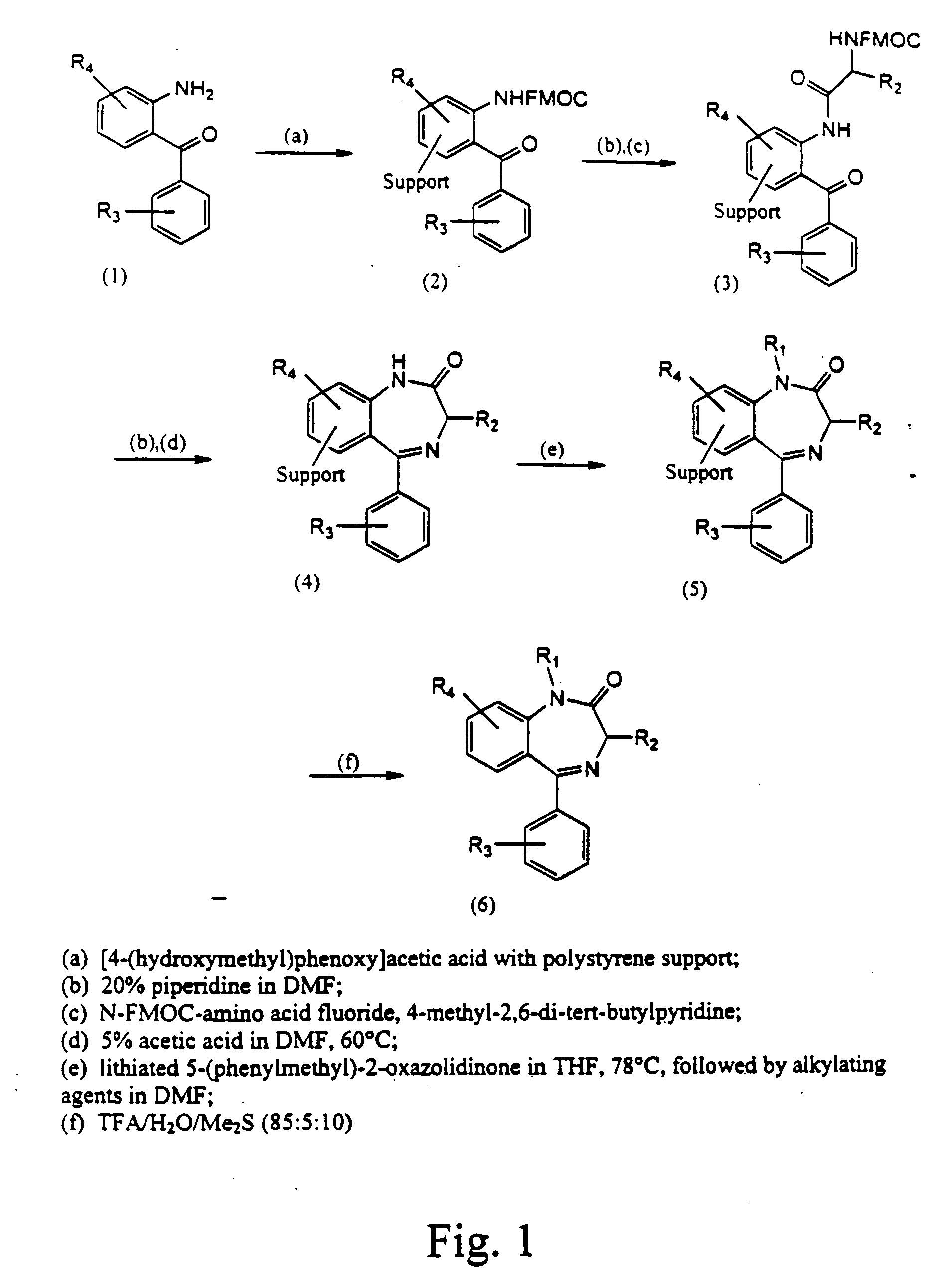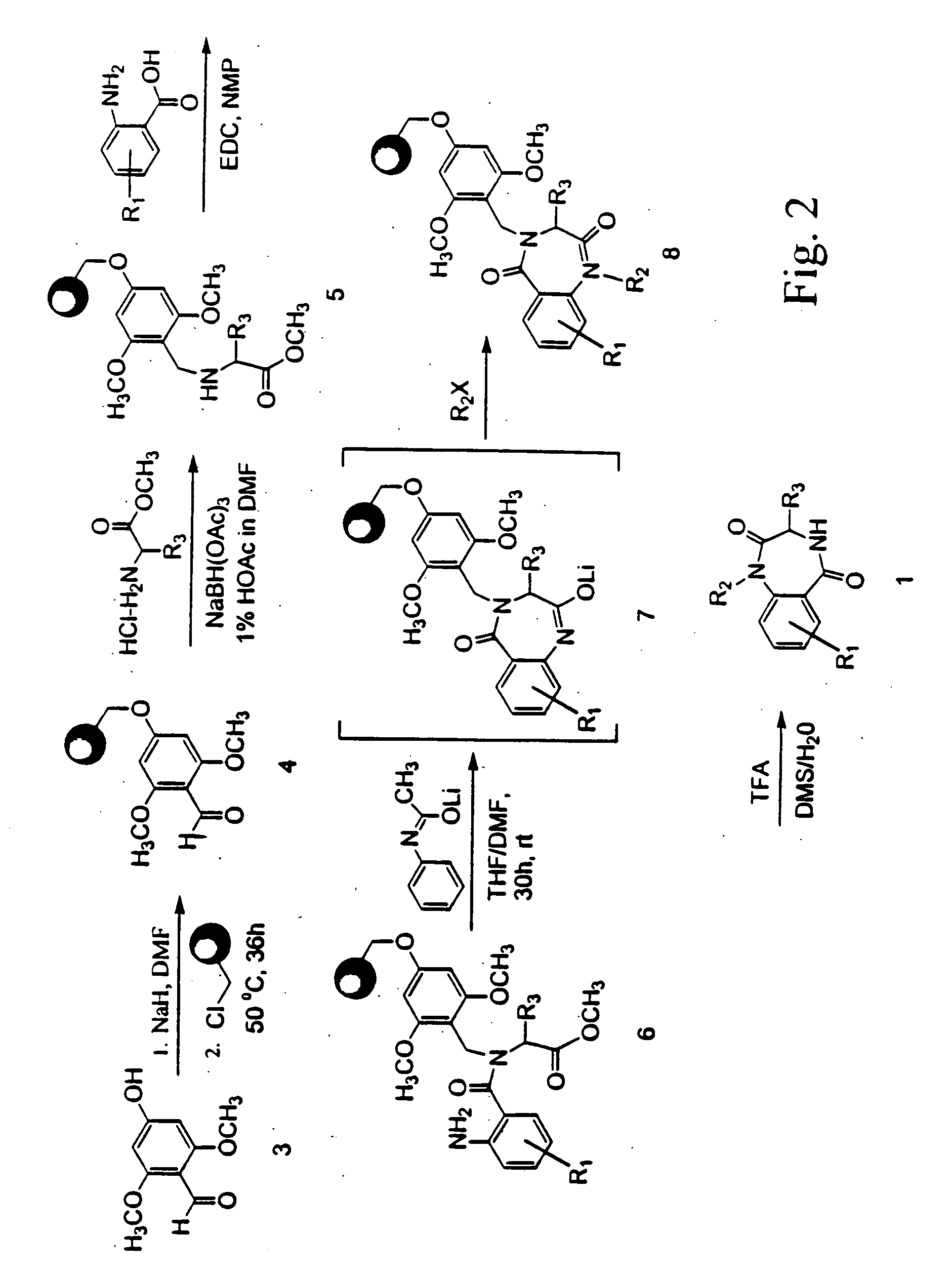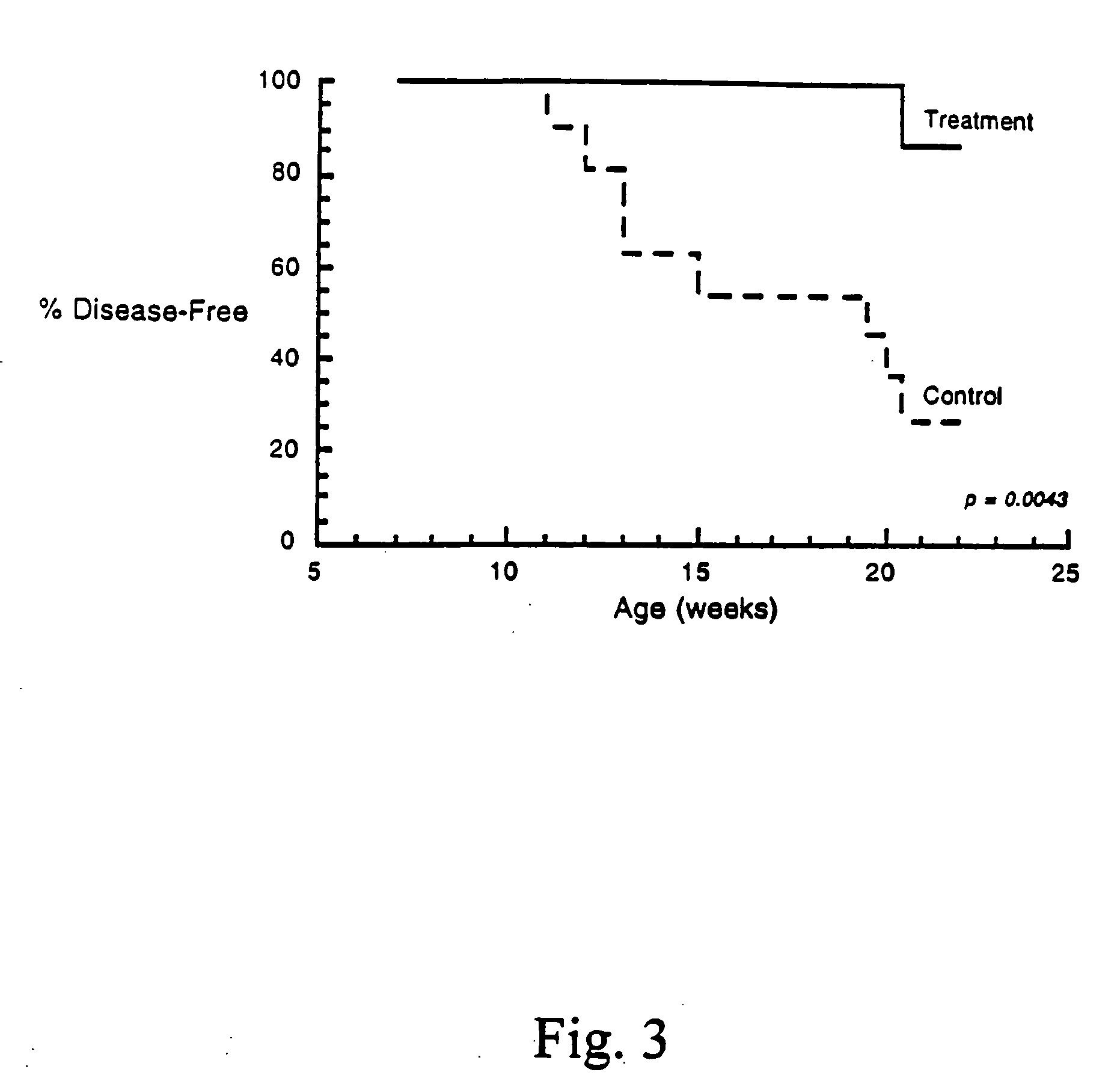Therapeutic applications of pro-apoptotic benzodiazepines
a technology of pro-apoptotic benzodiazepines and therapeutic applications, applied in the field of medicinal chemistry, can solve the problems of difficult treatment of ovarian cancer, pathologic accumulation of t and b cells,
- Summary
- Abstract
- Description
- Claims
- Application Information
AI Technical Summary
Benefits of technology
Problems solved by technology
Method used
Image
Examples
example 1
Ability to Induce Cell Death
[0185] Several individual representative compounds that induce apoptosis have been shown above. Of these, the most potent compound is identified as Compound 1, which is shown below.
[0186] Compound 1 was used to induce cell death in a variety of cells by using the above-described materials and methods. Table 1 shows cell viability data after 18 hours of culture with Compound 1 in reduced serum media as described above.
TABLE 14 μMCell LineSourceTypeBz6 μM Bz10 μM BzJurkathumanT-cell000IMRhumanneuroblastoma10000SHSY-5YhumanneuroblastomaNd00ShephumanneuroblastomaNd800293ThumanEmbryonicNdNd30fibroblastRAW 246.7murinemonocytic70%00NIH 3T3murinefibroblastNdNd25
(lower numbers equal increased killing).
Nd = Not determined
example 2
[0187] MRL / MpJ-lpr / lpr (MRL-lpr) mice develop similar serological and histological manifestations of autoimmune disease as human SLE. These mice were developed by a series of cross-breeding of inbred strains until an autoimmune phenotype appeared. (Theofilopoulos A. N. and Dixon F. J. (1985) Adv. Immunol. 37:269-390). The MRL-lpr mice are characterized by the spontaneous development of systemic autoimmune disease. This disease is manifested in several physiological locations and resembles a variety of human diseases. For instance, the kidney damage in these mice is associated with high serological titers of anti-DNA as in human SLE. They also develop an erosive arthropathy and a lymphocytic infiltration of the salivary glands, similar to the human diseases rheumatoid arthritis (RA) and Sjörgen's disease, respectively (Theofilopoulos, supra).
[0188] In general MRL-lpr mice have a profound defect in apoptosis due the mutation of the lpr gene locus. (Sakata K. et al. (1998) Clin. Immun...
example 3
Compound 1 as a Lymphotoxic Agent
Methods
[0210] Animals and Experimental Design:
[0211] Female NZB / W mice (Jackson Labs) were housed in specific pathogen-free, environmentally controlled rooms operated by the University of Michigan's Unit for Laboratory Animal Medicine with 12 hr light-dark cycles and were given food and water ad libitum. Mice were randomly distributed into treatment and control groups. All mice were dosed through intraperitoneal injections using a Hamilton repeating dispenser with glass microliter syringes and 30 gauge needles. Control mice received vehicle (50 μL aqueous DMSO) and treatment mice received Compound 1 dissolved in vehicle. Animal weights were determined weekly, and dosing schedules readjusted thereafter.
[0212] Collection of Blood Tissues:
[0213] Peripheral blood was obtained from the tail veins of all mice for complete blood counts analysis and collection of serum. Blood was first allowed to clot at room temperature for 1 h, and then overnight at ...
PUM
| Property | Measurement | Unit |
|---|---|---|
| incubation time | aaaaa | aaaaa |
| particle size | aaaaa | aaaaa |
| structure | aaaaa | aaaaa |
Abstract
Description
Claims
Application Information
 Login to View More
Login to View More - R&D
- Intellectual Property
- Life Sciences
- Materials
- Tech Scout
- Unparalleled Data Quality
- Higher Quality Content
- 60% Fewer Hallucinations
Browse by: Latest US Patents, China's latest patents, Technical Efficacy Thesaurus, Application Domain, Technology Topic, Popular Technical Reports.
© 2025 PatSnap. All rights reserved.Legal|Privacy policy|Modern Slavery Act Transparency Statement|Sitemap|About US| Contact US: help@patsnap.com



